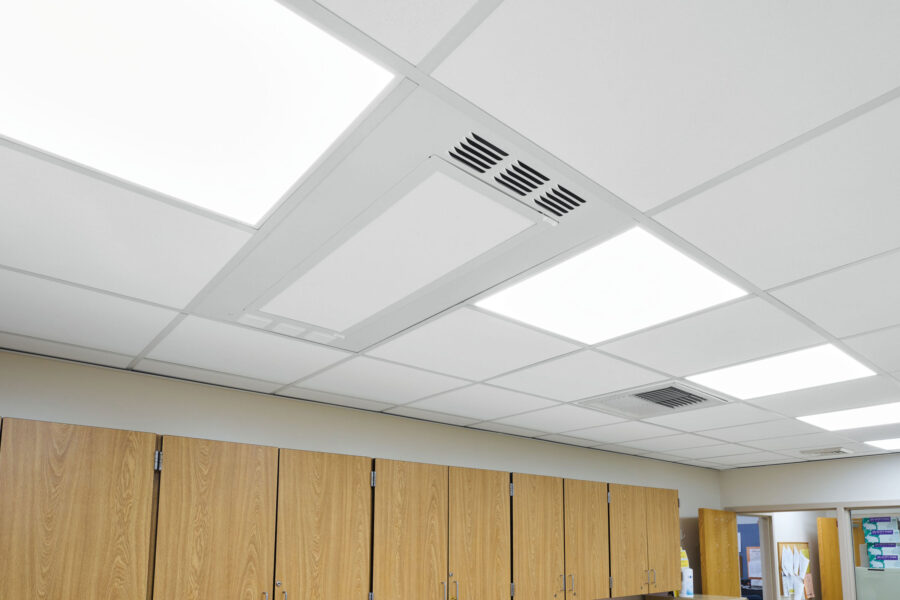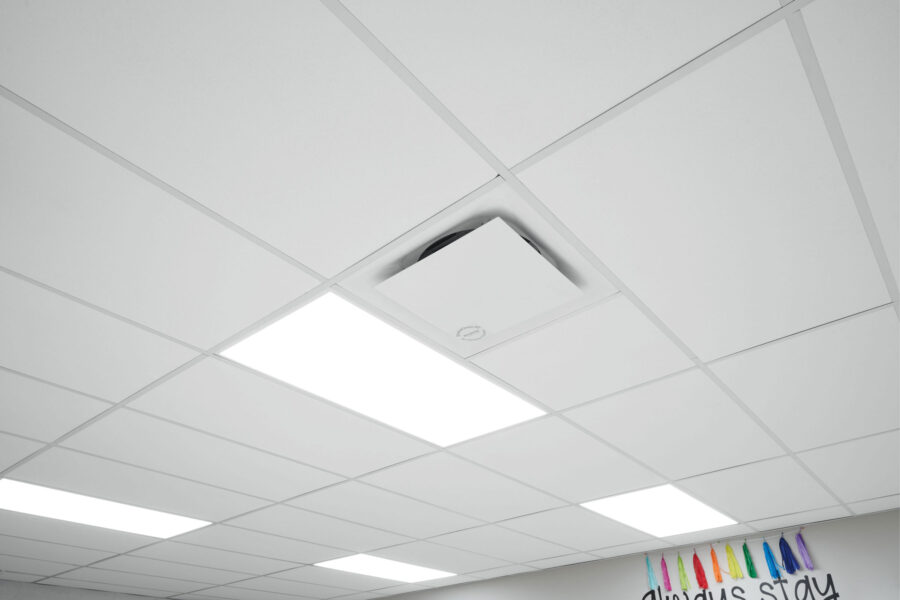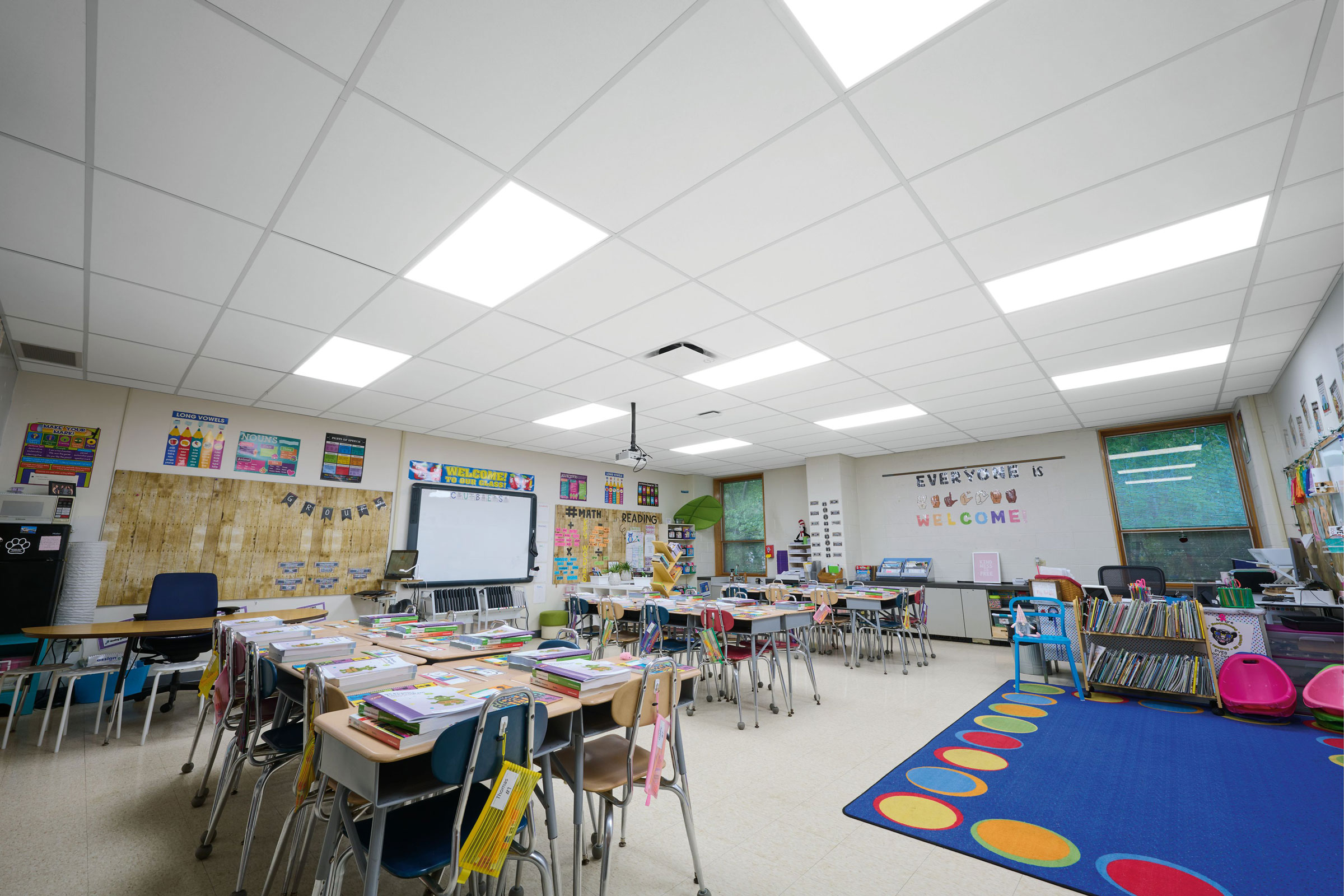Story at a glance:
- Indoor environmental quality is vital for the productivity and well-being of Americans, who spend approximately 90% of their time indoors.
- Emphasizing air, light, temperature, and sound management in buildings not only improves occupant well-being but also reduces long-term operational costs by focusing on sustainable and efficient design elements.
- While architects design with occupant needs in mind, implementation often suffers due to material substitutions by contractors, highlighting the need for an integrated design approach to maintain health and well-being goals.
As many people spend much of their time indoors, indoor environmental quality (IEQ) is important to ensuring occupant health, comfort, and productivity.
“Whether it’s productivity in an office space or a student being able to hear a teacher in a classroom, IEQ—including air, light, temperature, and sound—is definitely a key factor,” says Anita Snader, senior sustainability manager at Armstrong World Industries. “People are normally the most expensive part of a building when you include their salaries, benefits, and other factors, so we can’t just focus on the brick and mortar. We also have to focus on the well-being of the people inside.”
Armstrong’s presence in education, office, and health care spaces demonstrates this well. In each of these cases proper acoustical ceiling design can prevent disruptive and unwanted noise that diminishes learning outcomes, dampens workplace productivity, and slows patient recovery. In addition, proper air filtration, which Armstrong ceilings also provide, can have a substantial impact on indoor air quality (IAQ).
The Armstrong healthy spaces ecosystem guides product development to focus on the human experience in a space. Focusing on air, light, temperature, and sound ensures that interiors are not only functional in the technical sense but conducive to human well-being, too.
Health and Well-Being in Design
While interest in improving IEQ has been growing for many years, the Covid pandemic brought more attention to the issue, Snader says. As the number of professionals spending large amounts of time indoors grew, the CDC responded by issuing new guidance on ventilation requirements, the EPA inaugurated its Clean Air Challenge to facilitate community engagement, community, and education around the topic of IAQ.
Products to Improve IEQ and Well-Being

This elementary school in Pennsylvania took an integrated design approach to IEQ; the VidaShield UV24 Air Purification System is installed in the nurses’ station. Photo courtesy of Armstrong World Industries
Armstrong does its part by offering a variety of solutions aimed at improving IEQ. The company’s air purification portfolio includes products that contribute to air filtration, air disinfection, and air monitoring.
For instance, the VidaShield UV24 is an in-room air cleaner that pairs with Armstrong’s ceilings. By utilizing shielded ultraviolet light, the VidaShield system can neutralize 97% of bacteria, viruses, and allergens. What makes this solution unique is that it is installed in the ceiling, which is unusual for air systems of its type. “A lot of these air purification and filtration technologies were placed in the corner of the room,” Snader says. “Improved air quality can begin at the ceiling. We have studies showing air purification is more effective in the ceiling than floor-based units.”
In addition to VidaShield, Armstrong offers the StrataClean IQ Air filtration system, another in-ceiling system that provides MERV 13 filtration to capture airborne contaminants, allergens, and other particulate matter.
MERV 13 filters are capable of capturing airborne particles as small as 0.3 to 1.0 microns, resulting in significant productivity and health benefits for building occupants. According to a study from the Harvard School of Public Health, capturing these particles to improve IAQ can result in a 61% reduction in cognitive performance issues. In addition, a study published in the International Journal of Indoor Environment and Health found that improved air filtration contributed to a decrease in respiratory symptoms reported by office workers by up to 50%. The US Department of Energy also reports that ensuring HVAC systems are free of excessive dust by using high-efficiency filters like MERV 13 can reduce energy consumption by 10 to 30%.
Air monitoring rounds out the portfolio of Armstrong IAQ solutions. “We’ve partnered with a company called Awair and utilized an air monitoring system that tracks temperature, humidity, CO2, VOCs, light, and noise, and reports that on a monitoring screen,” Snader says. “That’s important because you can’t see or hear air quality. It’s not visible or audible. For it to be actionable you have to monitor it.”
The Need for Integrated Design

StrataClean IQ was implemented at this elementary school. Photo courtesy of Armstrong World Industries
While architects are adept at considering the needs of the people who will occupy the spaces they design, Snader says issues often emerge in the later implementation stages when contractors may substitute materials and products other than those specified in the original plans.
“I think to solve this, the important element is integrated design. You have to design for the people and the purpose of the space with consistency. If you do that, you will get the right products, the right materials, and the right results,” she says.


